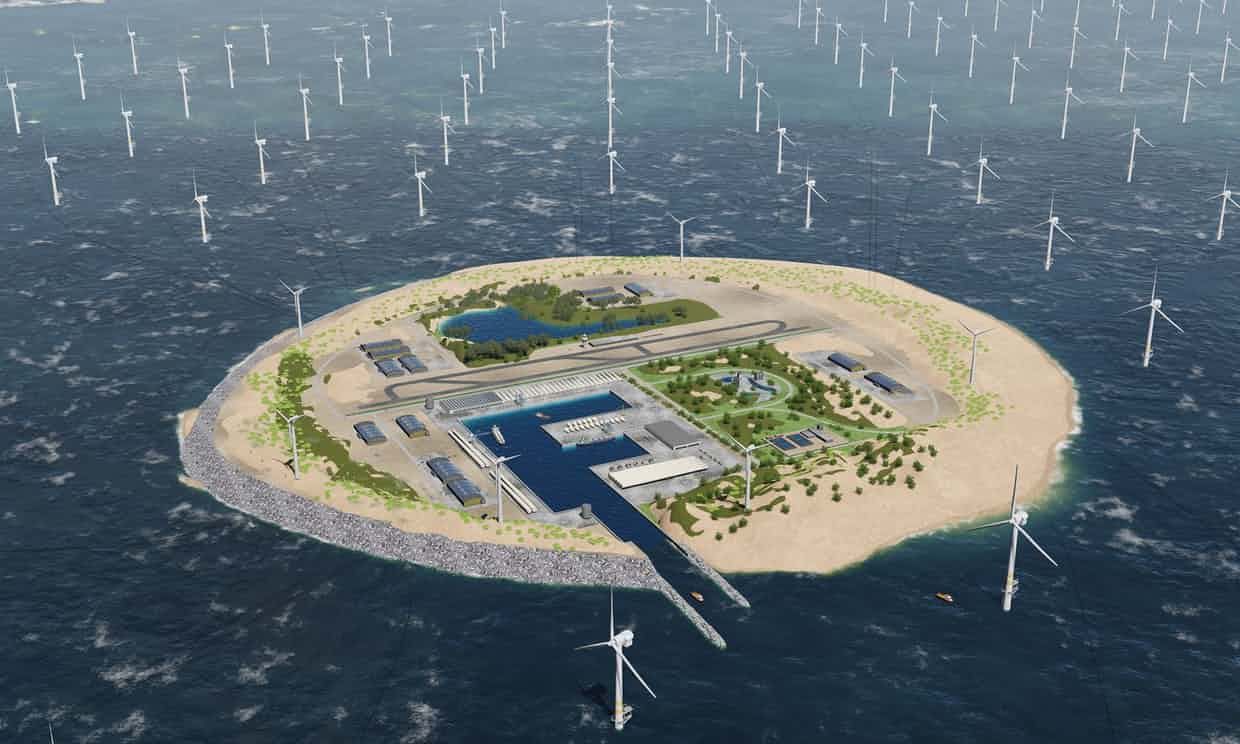By Gary Elinoff, contributing writer
There are plans afoot in Holland to build a gigantic offshore wind farm to produce a massive 30 gigawatts of electrical power. That’s right — 30 gigawatts. To put that in perspective, the average nuclear, gas, or coal plant typically generates about 0.8 gigawatts, so this venture will be about 40 times as great.
The project entails building a 2,300-square-mile complex in the North Sea centered on an artificial island, which, as described in The Guardian , will itself be 5 or 5 kilometers in area and will serve as a hub for thousands of wind turbines. The precise location of the complex, the Dogger Bank, is actually closer to the U.K. than to Holland itself. By way of comparison, the largest offshore wind farm existing today is the London Array, which, according to Quartz Media , takes up 47 square miles and generates about 0.6 gigawatts of power.
Who but the Dutch?
With much of their country’s landmass recovered from the sea centuries ago, long before the advent of even the steam engine, the Dutch are just the people to undertake this titanic offshore project, which will be spearheaded by TenneT , that country’s power grid operator. The mighty North Sea is somewhat shallow in the Dogger Bank area, which makes it a suitable location from which to anchor the several thousand turbines that will capture the wind and tame it for human purposes.
Another advantage to the location is the project’s nearness to land. Even using modern methods of high-voltage DC power transmission , transporting massive amounts of power across the seas is problematic. The fact that it is also close to some of the word’s most energy-hungry centers of industry, commerce, and population is another factor in its favor.
According to TenneT’s Rob van der Hage, building the island itself is not the main obstacle. “Is it difficult? In the Netherlands, when we see a piece of water, we want to build islands or land,” van der Hage told The Guardian . “We’ve been doing that for centuries. That is not the biggest challenge.”
Rather, van der Hage sees the main problems as economic, the foremost of which is to obtain agreements for shouldering the costs of the cables needed to ferry the power from the island to landfall in Britain. Only then can turbine builders, such as Innogy in Germany and Ørstead in Holland, get involved.

Windfarm Island as envisaged by TenneT. Image source: TenneT.
Don’t spoil the view
Offshore wind power has been a big bust in the U.S. The Cape Wind project, which would have spoiled the view from the estates of the multimillionaire Kennedy clan and of the billionaire Koch brothers, never got off the ground. And why should it have, when Texas is a virtual Saudi Arabia of hot air, ready to be harvested? Dutch genius or not, it’s a lot easier to anchor a wind turbine on land than it is at sea. But the Dogger Bank is located 60 miles off the British coastline; the only ones to be inconvenienced will perhaps be some seabirds, and seabirds can’t vote.
Advertisement
Learn more about Electronic Products Magazine





